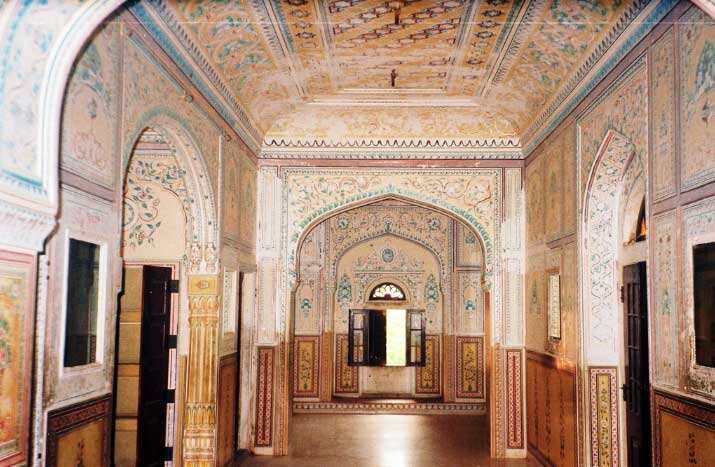The huge Nahargarh Fort located in the middle of the Aravalli ranges is a symbol of the pride of Jaipur city. At some point, Nahargarh Fort, Amer and Jaigad, along with the forts used to work as the security circle of the city of Jaipur. Maharaja Sawai Jai Singh II built Nahargarh Fort in 1734 after seven years of the construction of Jaipur city. It was originally built to avoid the attack of the Marathas, but later the fort began to be used as a summer residence of the kings. At that time, about 3.30 lakh rupees were spent on the construction of the fort.
https://www.youtube.com/watch?v=nrllcho24ga
Many names: 7 names from Nahargarh
The original name of this fort was Sudarshangarh which was later changed to Nahargarh which means ‘residence of tigers’. But historians say that the people of Jaipur have called this fort by many names. A total of seven more names came out on asking for information. These are Sulakshan Fort, Sudarshan Fort, Tiger Fort, Jaipur Flaggarh, Taj of Jaipur, Fort of Palace and Mithri Fort. In 1868, Maharaja Sawai Ram Singh expanded the Nahargarh Fort. Later in 1880 Maharaja Sawai Madho Singh gave the responsibility of converting this fort into a monsoon retreat to the Raj building, which handles the royal construction projects. He asked them to design a small palace inside the fort which would be a holiday resort. The main attraction of Nahargarh Fort is Madhavendra Bhavan designed by Vidyadhar Bhattacharya. Madhavendra Bhavan is a magnificent structure with 12 similar rooms. These rooms were built for nine wives of Maharaja.
Legend: Bhomiya’s umbrella was made to remove obstacles
There is a legend about the construction of this fort that when Maharaja Sawai Jai Singh was constructing this fort to protect his new established capital Jaipur, Bhomiya Jujhar Nahar Singh created obstacles in the construction of the fort. It is said that Bhomiya ji demolished the construction work done during the day at night. Then an umbrella was made in his name, after which the construction work continued smoothly. Since then, this fort was named Nahargarh.
9 palaces: The palaces of queens on both sides of the king’s room
Historians say that Sawai Madho Singh had built nine one -storey and two -storey palaces here in the name of his nine pasters (girlfriends). All these palaces are the same. They are built in the “Victorian style”. The names of nine palaces are as follows: Suraj Prakash, Khushal Prakash, Jawahar Prakash, Fine Prakash, Anand Prakash, Lakshmi Prakash, Moon Light, Flower Light and Spring light. All the palaces of the queens are connected to a corridor built on the roof. This corridor is connected to the palaces of queens from both sides of the king’s room. Through this, the king could go to any queen’s room.
StowThe beauty of the city is visible from
There is a place in Nahargarh part called the stop of Nahargarh. From here, tourists stare at the beauty of the city both day and night. There is also cafeteria here. People from here also see city lights on Diwali night.
The path of Nahargarh is no less than a thrill
Going to Nahargarh is nothing short of a thrill. When we go towards Amer, a Sarpili trail goes to the hill. A junction comes after climbing about 9 kilometers. From here, there is a beautiful fort of Nahargarh, 3 kilometers ahead via Charan Temple.
